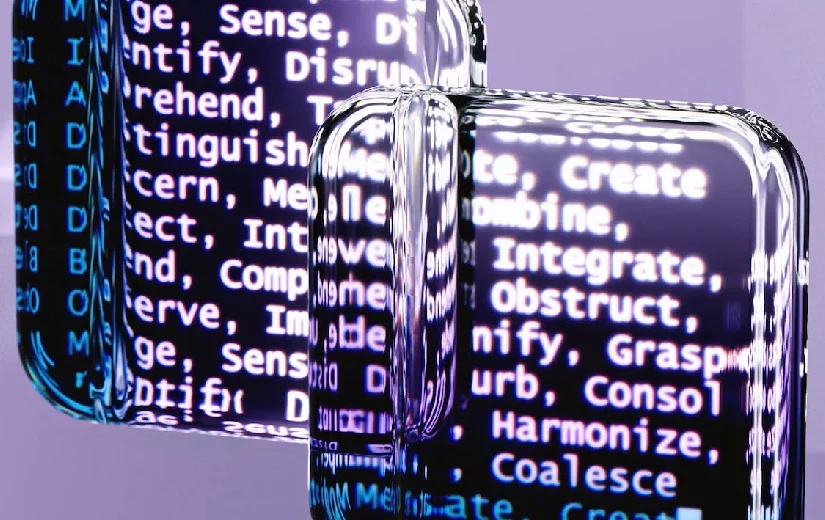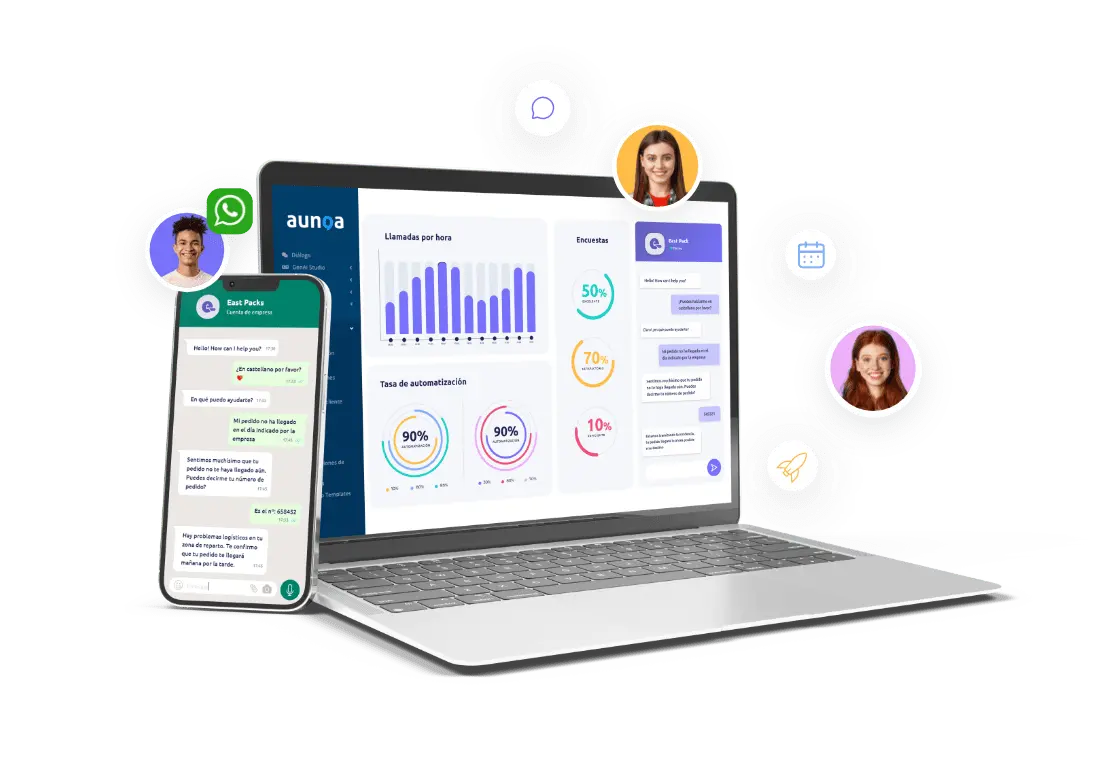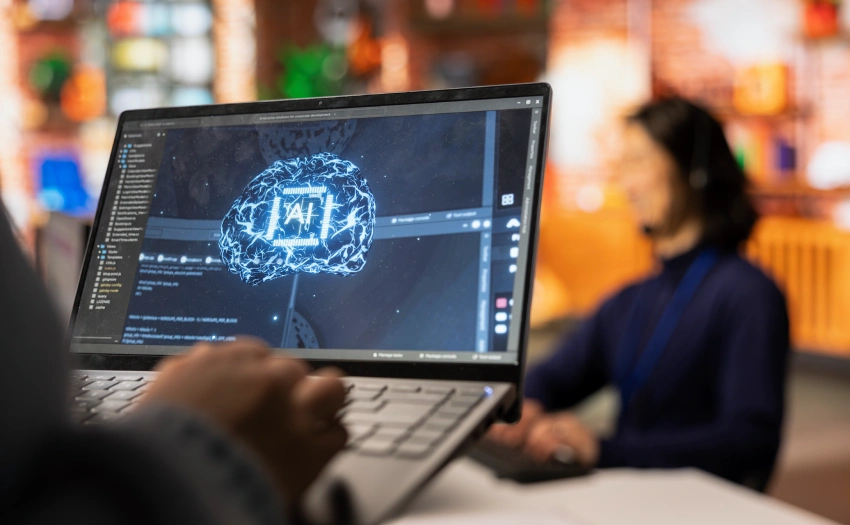From their modest beginnings to their integration into artificial intelligence, chatbots have come a long way in their evolution. In this article, we take a fascinating journey through time to explore how chatbots have evolved from their early steps to become the powerful AI-based conversational tools we know today. From the pioneers in the creation of chatbots to today’s applications in diverse industries, we will unravel the history of chatbots and anticipate the exciting future that awaits them.
The origin of chatbots
Chatbots, or computer programs capable of interacting with humans in a conversational manner, have their roots in the early stages of computer science. Although modern chatbots are driven by artificial intelligence and machine learning, their history dates back to a time when computers were very different from what we know today. The first chatbots were developed for the purpose of simulating human conversations, but their operation and capabilities were far from what we see today.
In the 1960s, computer scientist Joseph Weizenbaum created the “ELIZA”, one of the first examples of chatbots. ELIZA was capable of emulating a simple therapeutic conversation and relied on predefined rules to respond to user input. Although its level of interaction was limited, ELIZA aroused great interest and laid the groundwork for what was to come.
As the 1970s progressed, the development of chatbots continued, and other programs such as “PARRY,” designed to simulate a paranoid patient in a therapeutic conversation, were created. These early experiments marked the beginning of a steady evolution in the ability of chatbots to communicate and perform more complex roles.
While these early chatbots were limited compared to today’s creations, they laid the groundwork for an impressive evolution. In the following sections, we will explore how chatbots have advanced from their first steps to the most advanced generations that make use of artificial intelligence and machine learning to provide more sophisticated interactions.
💬 The generations of chatbots
As the years progressed, chatbots underwent an exciting process of evolution and development. This process gave rise to different generations of chatbots, each with unique features and capabilities. From rules-based chatbots to chatbots driven by machine learning and artificial intelligence, each generation marked an important step in improving the interaction and understanding capabilities of chatbots. In the following sections, we will explore in detail these different generations and how they have contributed to today’s chatbot landscape.
First generation: Rule-based chatbots
The first generation of chatbots, also known as rule-based chatbots, marked the first steps in the development of these conversational tools. These chatbots relied on a programmed approach and predefined rules to interact with users. In essence, they followed a fixed set of instructions and conversation patterns to respond to user input.
While these chatbots were limited in terms of their ability to understand human language and provide personalized responses, they played an important role in laying the foundation for chatbot technology. They were often deployed in specific environments, such as customer service websites, to provide automated responses to common questions. As we move forward in the evolution of chatbots, we will see how this first generation paved the way for significant improvements in the interaction and understanding of chatbots.
Second generation: Machine learning chatbots
The second generation of chatbots marked an important milestone in the evolution of these conversational tools. Instead of relying solely on predefined rules, these chatbots adopted a machine learning approach to improve their ability to interact with users.
These second-generation chatbots were able to learn and adapt from previous conversations, allowing them to respond in a more contextual and personalized way. They used natural language processing(NLP) algorithms to better understand users’ intentions and provide more accurate responses.
This evolution led to greater versatility in the application of chatbots in a variety of fields, including customer service, e-commerce and healthcare. The second generation of chatbots paved the way for an even more exciting future, where artificial intelligence and machine learning would play an even more prominent role in the development of these conversational tools.
Third generation: Deep Learning Chatbots
This stage represents a significant leap in the evolution of these conversational tools. These third-generation chatbots are powered by deep learning, a branch of artificial intelligence that enables an even more advanced level of understanding and response.
In contrast to previous generations, deep learning chatbots have the ability to understand not only natural language, but also the context and nuances of conversations. This is due to the ability of these machines to process large amounts of data and continuously learn from new interactions.
Third-generation chatbots can perform complex tasks and provide more accurate and personalized responses. They are present in a wide range of applications, from virtual assistance in customer service to task automation in fields such as medicine and e-commerce.
This third generation represents the pinnacle of the evolution of chatbots, where artificial intelligence and deep learning play a key role in their operation.
The Artificial Intelligence revolution in chatbots
Artificial intelligence (AI) has been the catalyst for a true revolution in the world of chatbots. In this digital era, AI has played a key role in transforming these virtual assistants into highly sophisticated tools capable of understanding and responding to users’ needs in an exceptional way. The combination of artificial intelligence and chatbots has given rise to a new generation of conversational assistants that adapt and improve with every interaction.
How has AI transformed chatbots?
The AI-driven transformation of chatbots is evident in multiple aspects:
- Natural language understanding: AI-enabled chatbots can understand human language at a much deeper level. This means they are able to interpret nuance, sarcasm and complex questions, allowing for a more natural interaction.
- Continuous learning: AI allows chatbots to learn from each conversation. The more interactions they have, the smarter they become. This translates into increasingly accurate responses tailored to the user’s specific needs.
- Personalization: AI allows chatbots to personalize responses based on the user’s conversation history and preferences. This creates a more satisfying and relevant experience for the user.
- Automation of complex tasks: AI-powered chatbots can perform more complex tasks, such as generating reports, scheduling appointments and resolving technical issues, saving time and improving efficiency.
- Applications in diverse industries: AI has brought chatbots into sectors beyond customer service, including medicine, e-commerce, education and more. AI-powered chatbots have become allies in automating processes and improving customer service.
The synergy between artificial intelligence and chatbots has generated a new era in which conversation with machines is more natural, useful and effective than ever.
The future of chatbots
The future of chatbots looks exciting and full of possibilities. As artificial intelligence continues to advance, chatbots will become even more sophisticated, capable of delivering exceptional user experiences and performing increasingly complex tasks. The integration of technologies such as natural language processing, deep learning and speech recognition will enable chatbots to understand and communicate with humans in an almost indistinguishable way.
Chatbots will not only become allies in automating processes and improving business efficiency, but will also become an integral part of human-machine interaction in a variety of industries. Advances in conversational artificial intelligence are paving the way for a world in which virtual assistance will be an essential part of our daily lives.
If you want to continue exploring the latest trends in artificial intelligence, chatbots and more, we invite you to keep browsing our blog. Also, don’t miss out on the latest and most useful articles by subscribing to our newsletter for exclusive content and expert advice. The future of conversational technology is just around the corner, and we want you to be ready to make the most of it – join the revolution and stay on top of the latest news!






